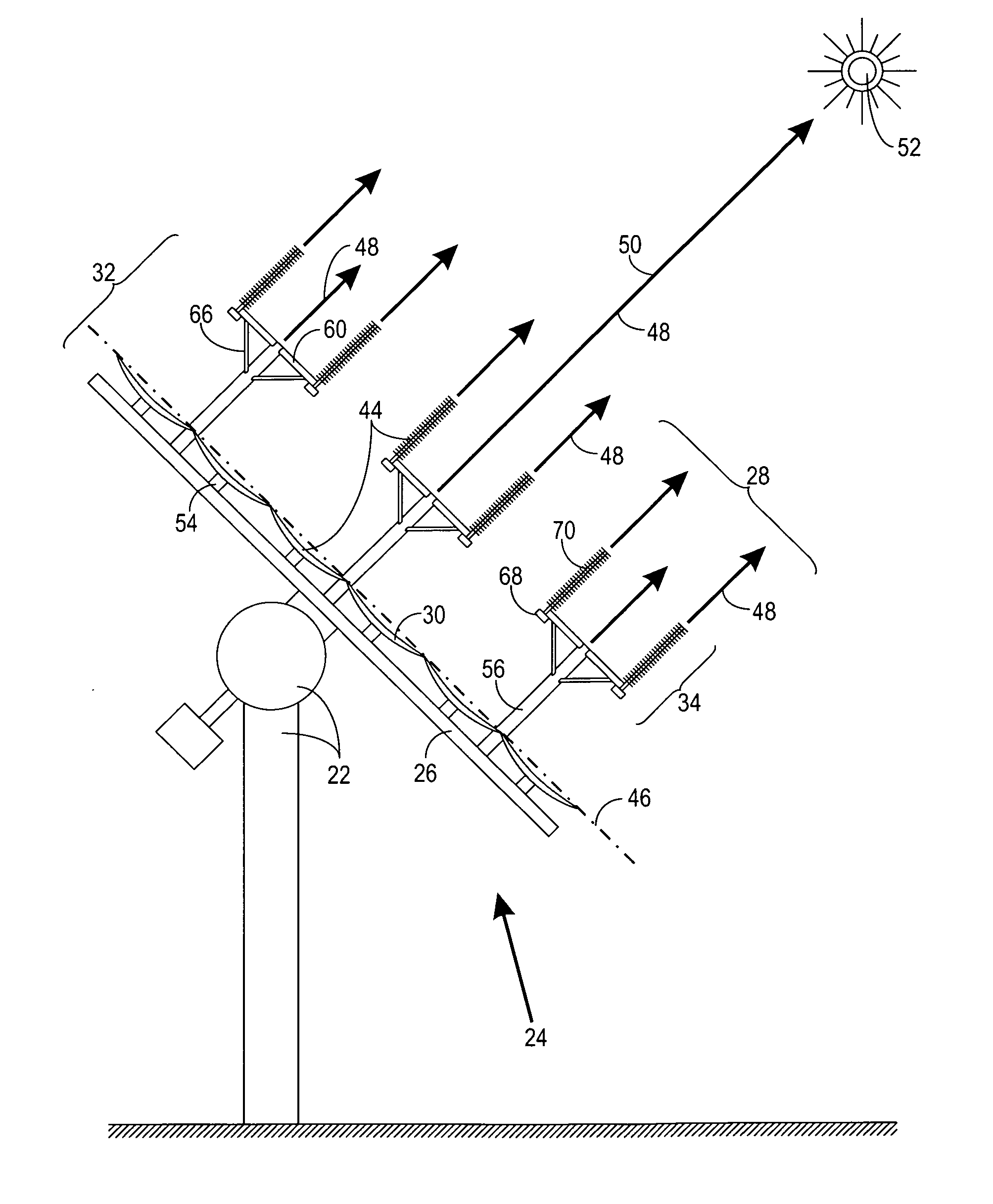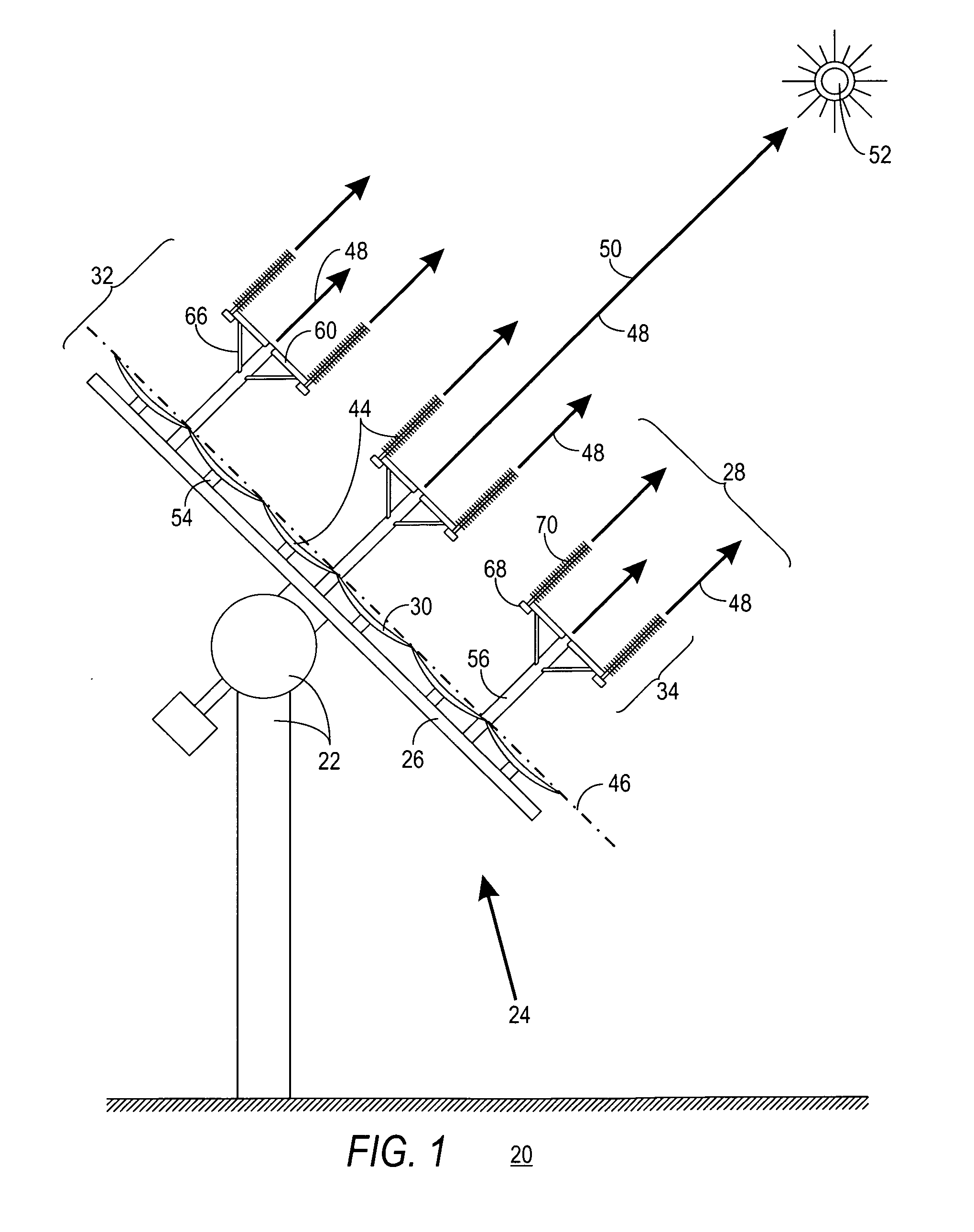Clustered solar-energy conversion array and method therefor
a solar energy and array technology, applied in the direction of thermal-pv hybrid energy generation, light radiation electric generators, lighting and heating apparatus, etc., can solve the problems of marked increase in electrical generation costs, economic and energy inefficiencies, and less economic efficiency of conventional solar-energy generating systems, so as to extract and dissipate heat from sec cells, the effect of reducing dead zones in areas
- Summary
- Abstract
- Description
- Claims
- Application Information
AI Technical Summary
Benefits of technology
Problems solved by technology
Method used
Image
Examples
Embodiment Construction
[0037]FIG. 1 shows a side view of a solar-energy conversion (SEC) system 20 in operation in accordance with a preferred embodiment of the present invention. The following discussion refers to FIG. 1.
[0038] Throughout this discussion the emphasis is on the economic efficiency of SEC system 20. While energy efficiency is concerned with the percentage of solar energy converted into electricity under a given set of conditions, economic efficiency is concerned with the number of kilowatts-hours of electricity generated per unit expenditure. Both the amortization of initial structure costs (i.e., component, construction, and installation costs) and the ongoing expenses (spare-parts, maintenance, repair, and operating costs) contribute to the economic efficiency of system 20.
[0039] It is a primary object of the present invention to increase the economic efficiency of system 20 wherever practical. It is recognized that, in many instances, a tradeoff must be made where a decrease in econom...
PUM
 Login to View More
Login to View More Abstract
Description
Claims
Application Information
 Login to View More
Login to View More - R&D
- Intellectual Property
- Life Sciences
- Materials
- Tech Scout
- Unparalleled Data Quality
- Higher Quality Content
- 60% Fewer Hallucinations
Browse by: Latest US Patents, China's latest patents, Technical Efficacy Thesaurus, Application Domain, Technology Topic, Popular Technical Reports.
© 2025 PatSnap. All rights reserved.Legal|Privacy policy|Modern Slavery Act Transparency Statement|Sitemap|About US| Contact US: help@patsnap.com



